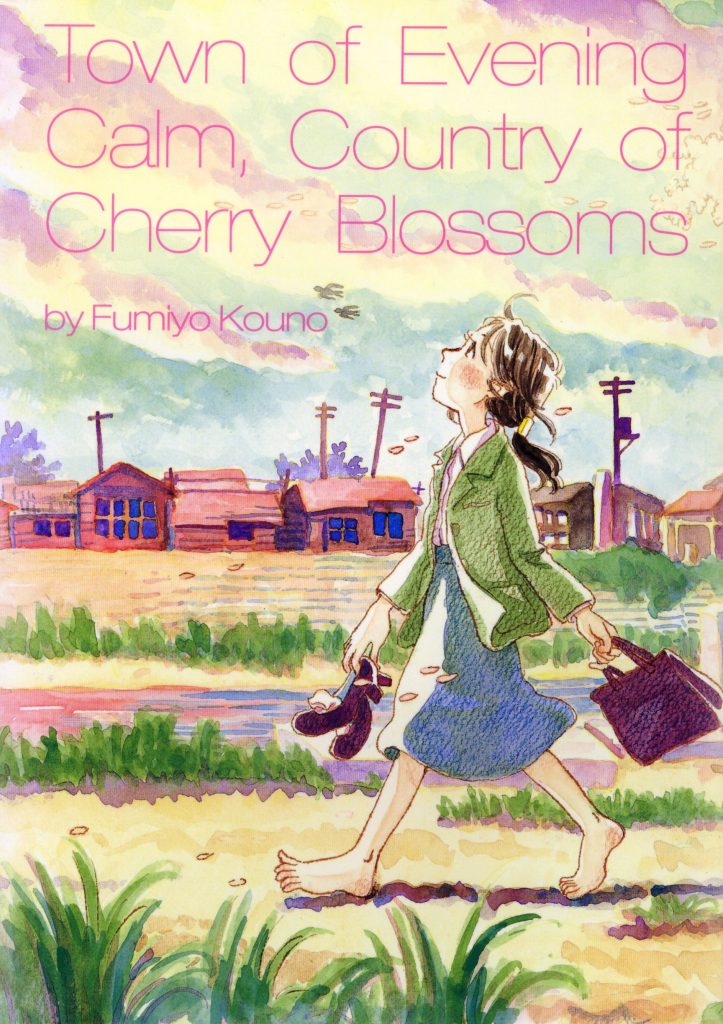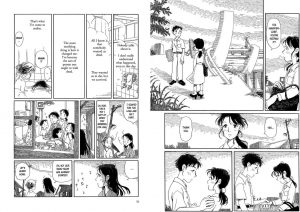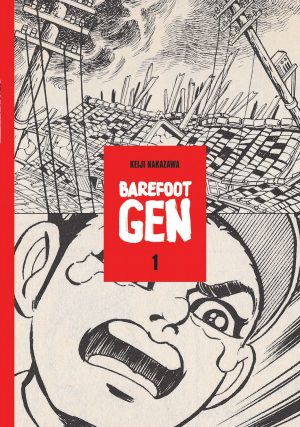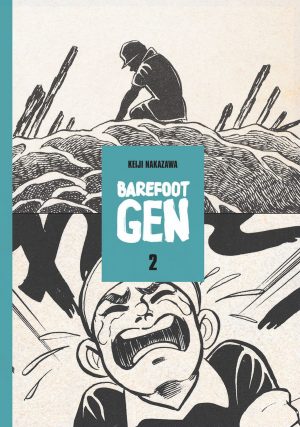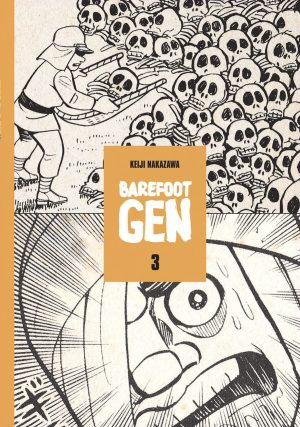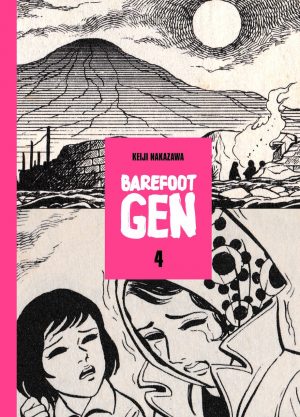Review by Win Wiacek
First published in 2004 Town of Evening Calm, Country of Cherry Blossoms is an award-winning collection of interlinked, generational short stories. The compelling tales deal with the aftermath of the atom bombing of Hiroshima, and particularly the treatment of bomb-affected survivors (“hibakusha”) by a culture that has traditionally shunned imperfection and studiously ignored unpleasant truths. The graphic novel was adapted into an award-winning feature film and radio serial in 2007.
The project was instigated by her editor rather than Fumiyo Kouno (or Kōno Fumiyo, if you’d like to acknowledge her actual name): a native of modern Hiroshima who apparently never considered herself as being affected by the ghastly events of August 6th 1945. However, Ms. Kōno discovered a strong voice within – and her own unrealised, unexpressed attitudes – when faced with the behaviour still directed toward hibakusha more than five decades later. Her afterword states it was “unnatural and irresponsible for me to consciously try to avoid the issue” and she decided that “drawing something is better than drawing nothing at all.”
Opener ‘Town of Evening Calm’ is set in 1955 and follows teenager Minami Hirano as she goes about her daily life in the still recovering city. She lives with her ailing mother and sister in a seedy shack and ruminates on the father and two sisters lost to the bomb, and baby brother Asahi who was mercifully staying with rural relatives when the bomb hit. She hasn’t seen him since that day. Her aunt thought it best to keep the healthy boy away, and subsequently adopted him. The surviving family struggle as seamstresses and clerks, trying to save enough money to visit him.
Follow-up ‘Country of Cherry Blossoms’ is divided into two separate tales. The first is set in Tokyo in 1987 with tomboy schoolgirl Nanami Ishikawa railing against her life. She is Asahi’s daughter – a second-generation victim, and has never met her relatives,. When her brother Nagio is hospitalised she sneaks into his room with new friend Toko Tone and showers him with cherry blossom petals to show him the spring he’s missing, unaware that his asthmatic condition is considered by many to be the taint of the bomb.
Part two takes up the story in 2004. Asahi has recently retired and moved in with Nanami, when medical graduate Nagio mentions that he has seen Toko at the hospital where he works. Nanami has other things to worry about as Asahi is disappearing for days at a time and she thinks he might be senile. One day she follows him, and – just as years before with Nagio – Toko, a virtual stranger, appears and shares her journey and revelations. The troubled old man is travelling to the rebuilt Hiroshima, driven by an irresistible impulse, and as they follow him Nanami discovers that real reason Toko stopped seeing her family.
Pensive, serene and deftly sensitive, almost elegiac, this book deals with uncomfortable issues by advocating tolerance, understanding and endurance. It earned the 2004 Grand Prize for manga, Japan Media Arts Festival and the 2005 Tezuka Osamu Cultural Prize Creative Award.
This moving portmanteau is well worth tracking down as a quietly magnificent tribute to the truism that “Life goes on”, and the proposition that even polite and passive intolerance should be resisted. It’s a book every politician in the world should read, holding a harsh lesson every cosy, comfortable family in existence needs to absorb.
